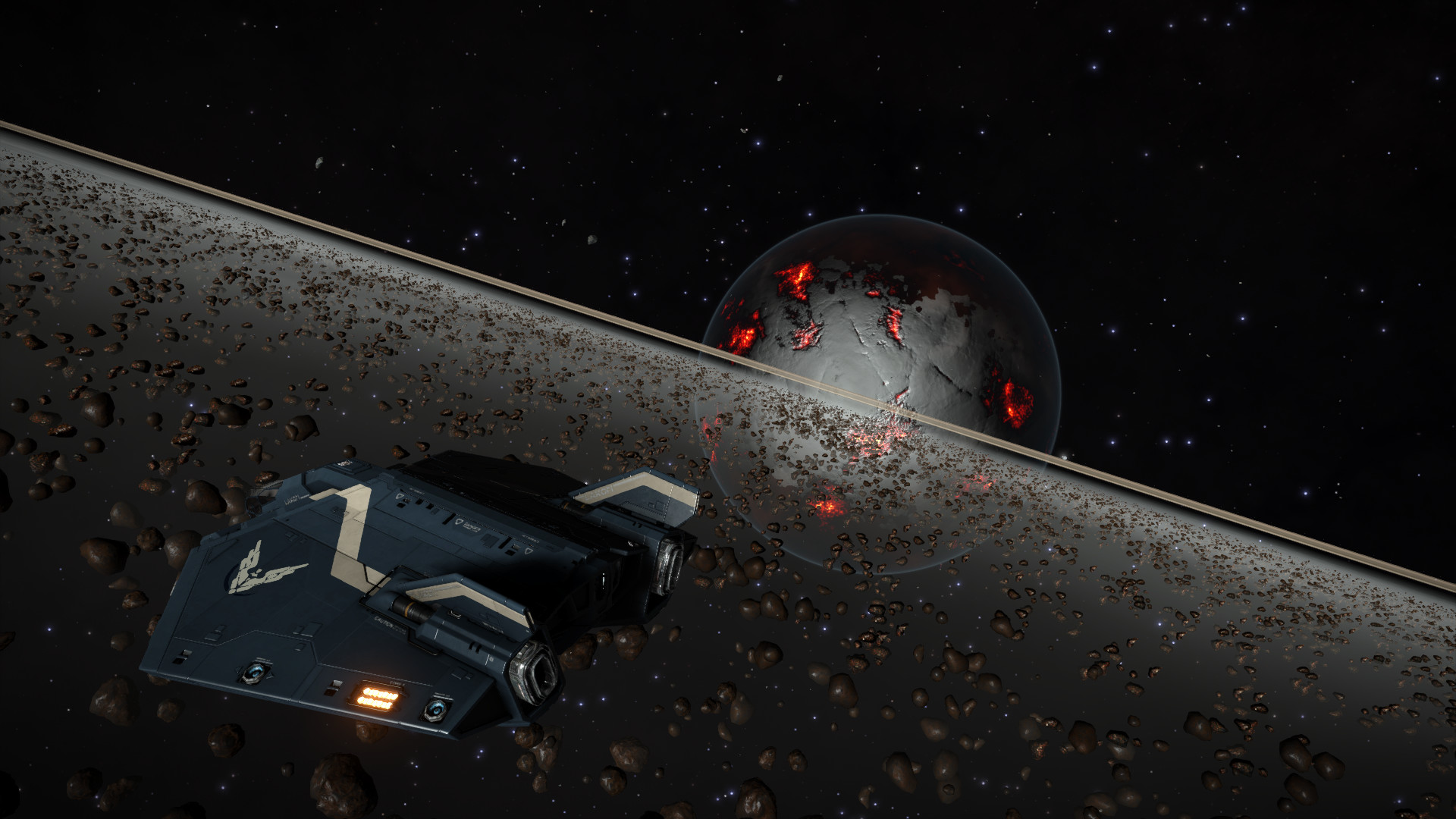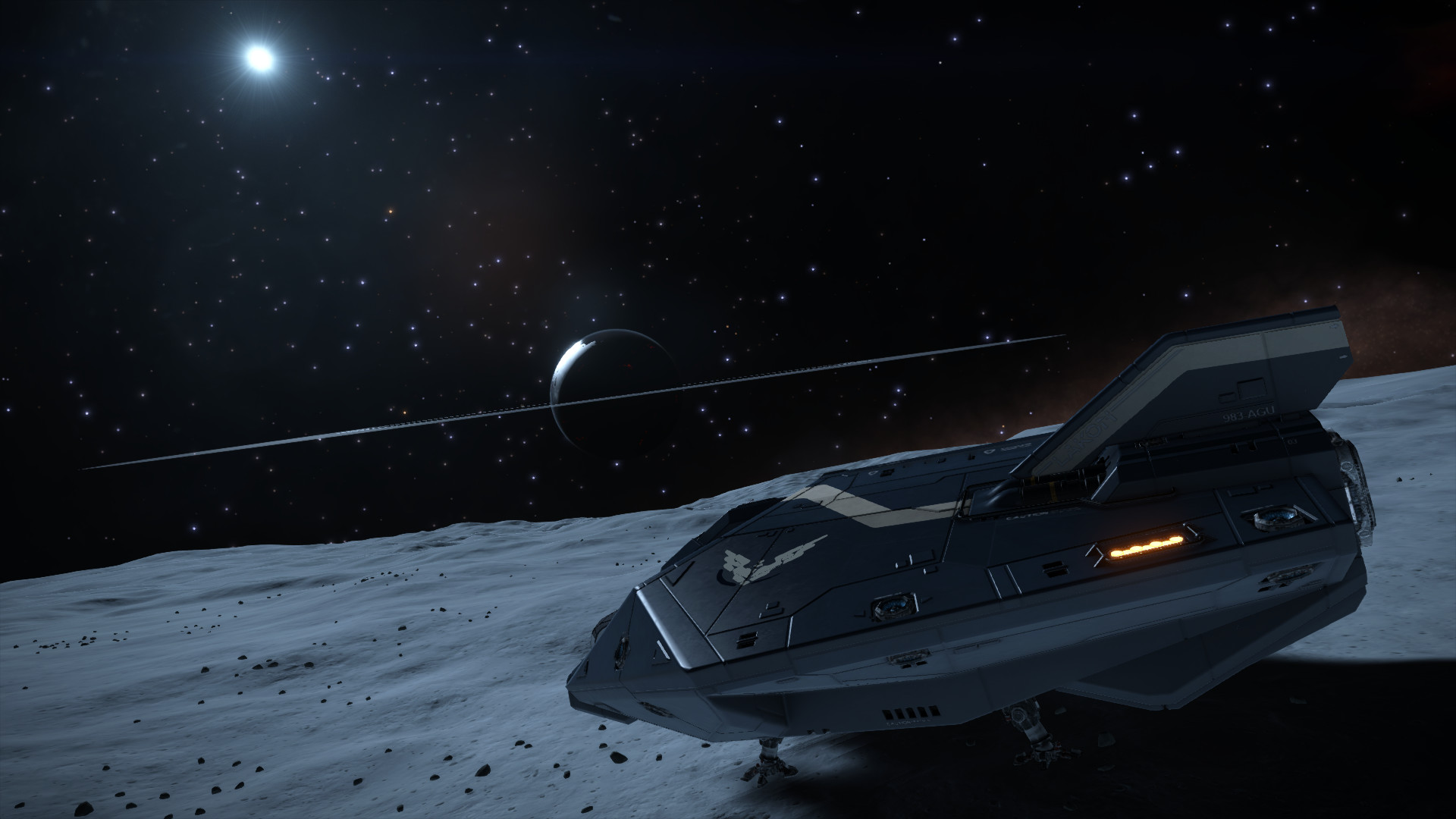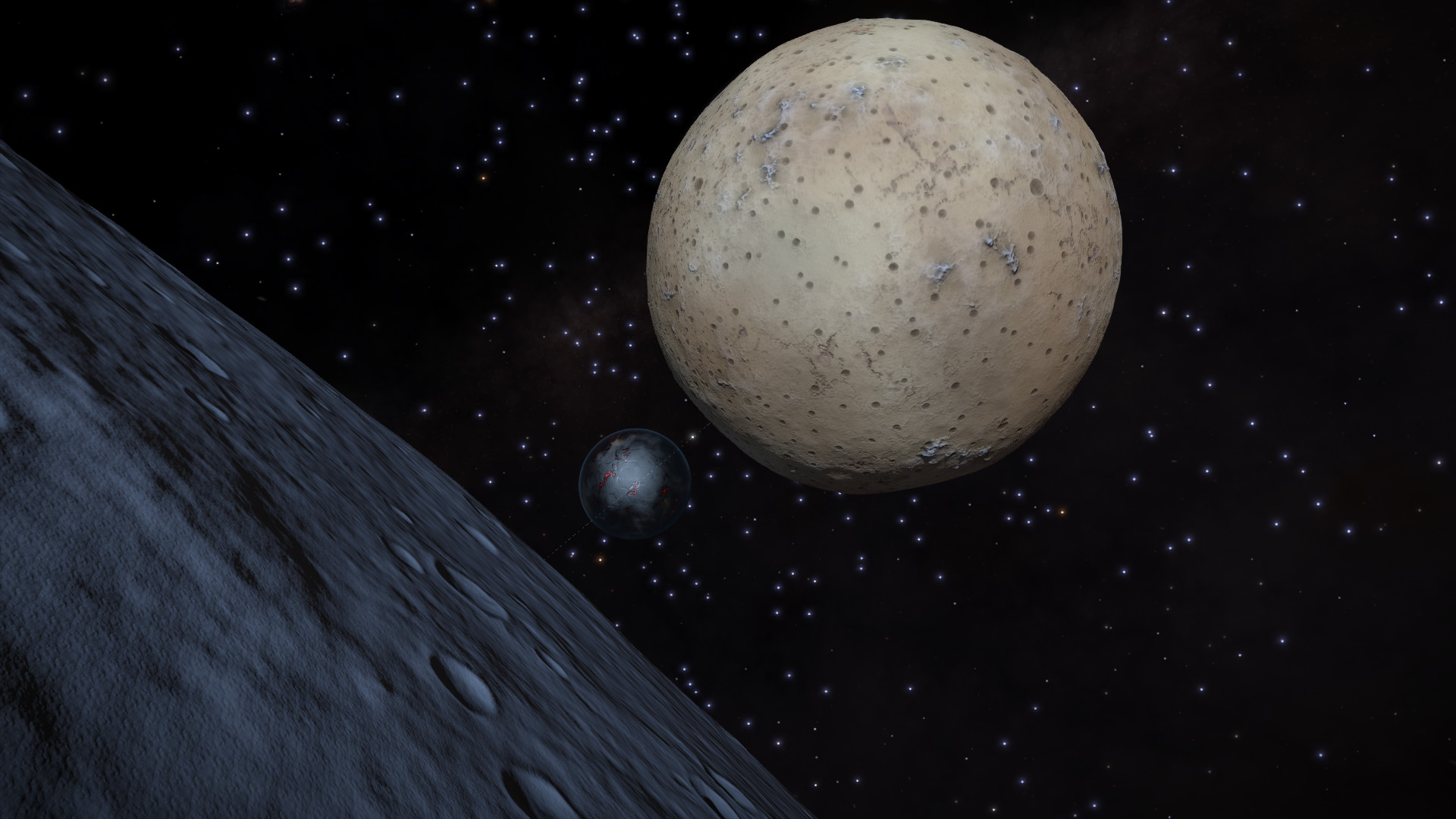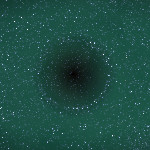Timing is Everything (Part 1 - Binary Moons)
28 Sep 2016IsraelZulu
In my earlier log, I mentioned how photography in the void can be a challenge. Here, I'll tell a couple stories, to explain some of what I mean.Remember how I said there's some planets that can only aptly be described as "Hell"? Planets like this one:

Well, I'd found one of these that had several moons orbiting it. One of the moons looked to be very close, and I'd hoped it would offer a nice view of the planet.
While indeed it was close enough to be able to see the planet at a respectable size above the landscape, I neglected to recognize (until I'd landed) that the moon was presently on the dark side of its parent. The picture is still quite wonderful, but it's not exactly what I was looking for.

I was about to set my nav computer for the next system jump - giving up hopes on the "perfect view" I had sought - when I noticed something out the window. The HUD had identified one of the other moons, on the opposite side of the planet from the one I'd landed on. And that moon was about twice as far from me as I was from the planet.
This meant that the other moon's orbit must be about the same as this one's. Even better, it would have a view of the bright side of the planet.
I took off and set out for the other moon. To pick up some speed, and line up my view for choosing a good landing spot, I overshot the planet and the other moon so that I was coming in from outside the moon's orbit.
That's when I saw what I really didn't expect. None of my instruments could have prepared me for this.

Perhaps if I'd paid attention to the nav computer, or looked more closely at the system map, I could have guessed that I was aiming for a binary moon. But I never would have expected them to be so close!
I pointed myself at the moon furthest from the planet, hoping to get a good shot from the ground that had the planet and the moon's brother in one view. I thought I'd gotten lined up pretty nicely, with good visual spacing between the two bodies, so I started my descent. It wasn't quite going to be the perfect shot, but it seemed to be the best I'd get with this angle of approach.

There was just one small problem. Though celestial objects are so immensely huge that they may seem like they're not moving much, relative to their size, a photographer has to remember that they are in fact moving. Such was the case with these moons, so that by the time I'd gotten landed the final view came out a little... awkward, I think.

As quickly as things were moving, I probably could have relocated and waited to take a picture of the other side of the eclipse. But this system had run out my patience for the night, unfortunately.
Out of curiosity though, I did take some measurements and ran some calculations on that binary moon system. It turns out, at their closest points, the surfaces of the moons are only separated by about one megameter. If I were so inclined, I could probably have flown from one moon to the other in about an hour without even powering up my FSD!
